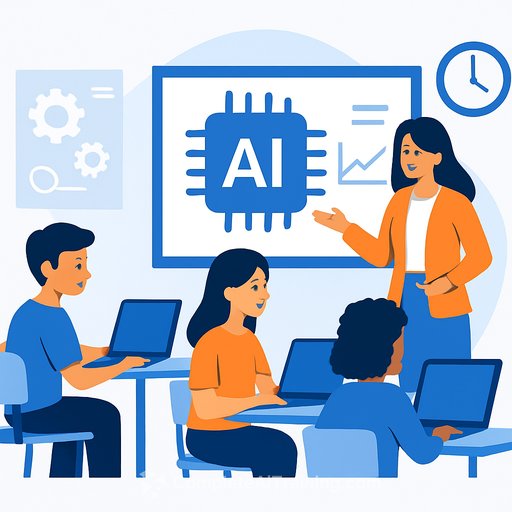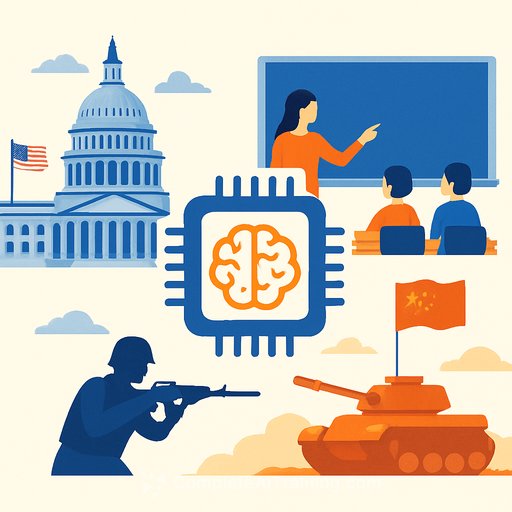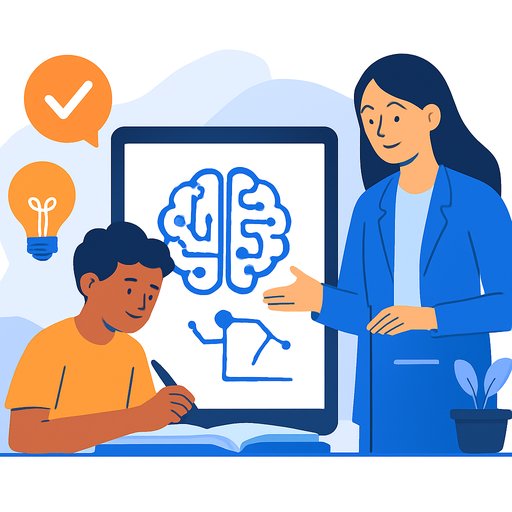Armenia Makes AI Education Part of the System - Practical Takeaways for School and University Leaders
At UNESCO's 43rd General Conference in Samarkand, Armenia signaled something most ministries still treat as a pilot: AI education is moving from talk to practice. Deputy Foreign Minister Robert Abisoghomonyan shared that Armenia is integrating artificial intelligence into its national education system and is ready to collaborate with UNESCO and Member States.
If you work in education, this isn't just diplomatic news. It's a signal on where global standards and funding priorities are headed: AI literacy, ethical guardrails, and cross-border projects around culture, heritage, and science.
What this means for educators
- AI isn't optional anymore. Build AI literacy, ethics, and practical use into core subjects-not as an elective stuck at the edge of the timetable.
- Pair innovation with values. Armenia emphasized responsibility, empathy, human dignity, and the prevention of atrocity crimes as core learning outcomes.
- Start with vulnerable learners. Keep affordability and access front and center, including for refugees and displaced students.
How Armenia is approaching it
The commitment is twofold: bring AI into the national system and anchor it to peace education, global citizenship, and human rights. The message is clear-teach tools and teach character, together.
Armenia also tied AI and education to cultural protection and documentation. That includes collaboration with UNESCO on safeguarding heritage in conflict and disaster zones, and using new technologies for restoration and access.
Action checklist for curriculum leaders
- Map AI competencies across grade bands: data literacy (early), prompt and critique skills (middle), model limits and bias (upper), and applied projects (capstone).
- Embed ethics as assessment criteria. Every AI project should include a short reflection on bias, consent, citation, and potential harm.
- Use local culture as a canvas. Student teams can digitize archives, record oral histories, or build mini knowledge bases for community heritage.
- Stand up a teacher quick-start: 6-8 hours on safe use, classroom routines, and plagiarism policies that emphasize learning over policing.
Culture and heritage: real projects your students can run
Armenia reaffirmed support for safeguarding heritage, referencing cooperation with UNESCO initiatives such as restoration work tied to Mosul's archives and broader protection efforts.
- Partner with libraries, museums, and local archives to catalogue, transcribe, and contextualize materials using AI tools (with strict privacy rules).
- Design cross-border projects focused on authenticity of cultural and religious monuments-compare sources, document changes, and cite rigorously.
Background on related UNESCO work is here: Revive the Spirit of Mosul.
Global citizenship in practice: SIDS, Africa, and scholarships
Armenia co-founded and co-chairs the UNESCO Group of Friends of Small Island Developing States and backed the recognition of April 25 as the International Day for SIDS. It also highlighted Priority Africa-through training for diplomats and planned scholarships for African students.
- Build a SIDS module into global studies: climate risk, cultural resilience, and policy responses. Have students produce short policy briefs or podcasts.
- Connect with schools in African countries for joint research sprints. Keep outputs small and shippable: data snapshots, oral history clips, or policy one-pagers.
Biodiversity education: plug into COP17
Armenia will host next year's Conference of the Parties to the Convention on Biological Diversity (COP17) and signaled close work with UNESCO networks like biosphere reserves and Global Geoparks. That's your cue to align projects with biodiversity themes and field learning.
- Launch "campus biodiversity audits" with students documenting species, invasive plants, and micro-habitat health-then share findings with local authorities.
- Tie in AI tools for species identification and data cleaning. Keep a clear policy on accuracy thresholds and verification steps.
For context on the convention: Convention on Biological Diversity.
A new opening for cultural cooperation
Following the August joint declaration in Washington D.C. and the initialing of an agreement between Armenia and Azerbaijan, Armenia stated that peace has been established between the two countries. The expected benefit for educators: safer conditions for preservation work, research exchanges, and documentation of heritage with historical accuracy.
- Plan joint seminars with regional institutions on conservation standards, authenticity, and stewardship of sacred sites.
- Co-develop student protocols for respectful documentation: consent, context, and community review before publishing.
Policy signals you can act on this year
- Write a 12-month AI-in-education plan that blends technical skills with ethics and peace education. Keep it short and public.
- Set minimal viable guardrails: approved tools list, data privacy rules, citation norms for AI-generated content.
- Fund one flagship heritage or biodiversity project per school or department. Pick work with visible community value.
- Track inclusion: device access, language support, and differentiated tasks for refugees and newcomers.
Need structured AI upskilling for your team?
If you're building staff capability fast, browse role-focused AI course paths here: Complete AI Training - Courses by Job.
Bottom line
Armenia's message at UNESCO was straightforward: teach AI, ground it in human values, and use it to protect what matters-people, culture, and nature. For education leaders, the path is clear enough: start small, ship projects that serve your community, and keep ethics as the throughline.
Your membership also unlocks:






